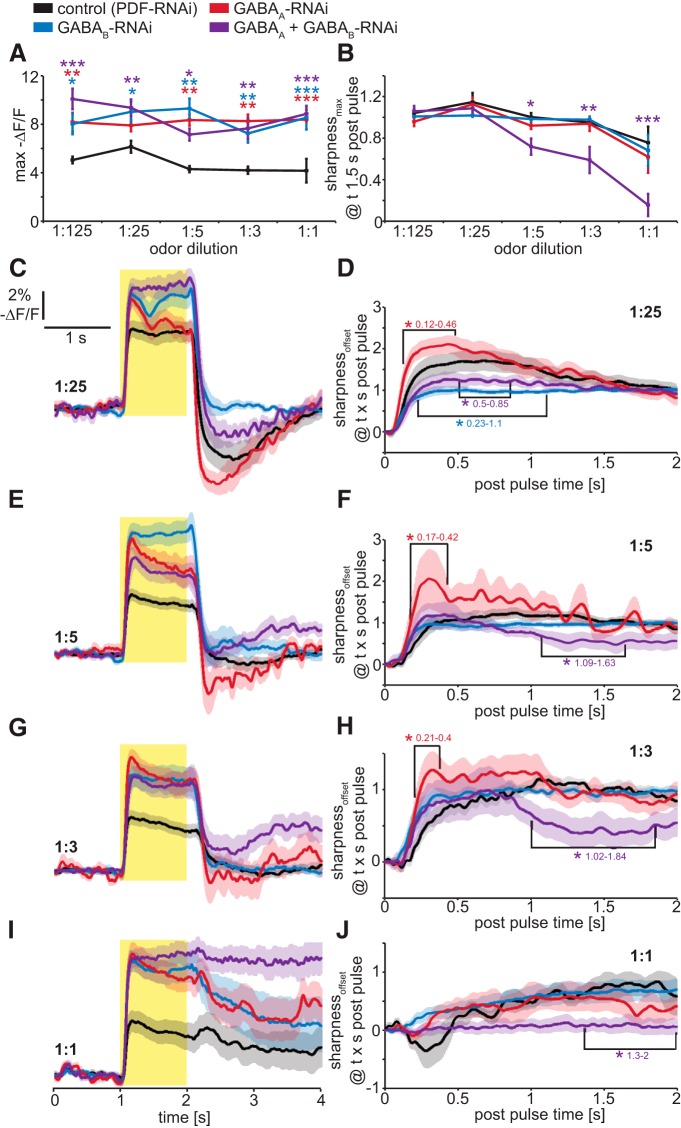Figure 5.
Temporal contrast enhancement in OSN presynaptic terminals is mediated by presynaptic GABAA and GABAB receptors as demonstrated by cell-specific RNAi-mediated knockdown. A, Maximum presynaptic voltage responses are increased by individual and simultaneous RNAi-mediated knockdown of GABAA (8-10G) and GABAB receptors. Mean ± SEM; n = 8. Statistical analysis: two-way repeated-measures ANOVA with Bonferroni post hoc test (asterisks are color coded to indicate pairwise comparisons vs control), *p < 0.05; **p < 0.01; ***p < 0.001. B, Temporal contrast enhancement of DM2 presynaptic voltage responses is unaffected by RNAi-mediated knockdown of either GABAA (8-10G) or GABAB receptors individually in OR22a-expressing OSNs. Simultaneous knockdown of GABAA (8-10G) and GABAB receptors reduces temporal contrast enhancement at odor intensities of 1:5 and higher. Mean ± SEM; n = 8. Statistical analysis: two-way repeated-measures ANOVA with Bonferroni post hoc test, *p < 0.05; **p < 0.01; ***p < 0.001. C, E, G, I, Presynaptic DM2 voltage responses to 1 s Eb pulses of gas-phase dilutions 1:25 (C), 1:5 (E), 1:3 (G), and 1:1 (I) in flies expressing either, or both, GABAA (8-10G) and GABAB-RNAi in OR22a-expressing OSNs. Mean ± SEM; n = 8-10. D, F, H, J, Time-dependent sharpness coefficient to analyze the time window in which GABA receptor knockdown affects contrast enhancement. After a 1:25 pulse (D) knockdown of GABAB receptors and simultaneous knockdown of GABAA (8-10G) and GABAB receptors affect sharpness during the hyperpolarization phase immediately after odor offset. Knockdown of GABAA receptors leads an increase in postpulse hyperpolarization for 1:25 (D), 1:5 (F), and 1:3 (H). Contrast enhancement of sustained activity later than 1 s after the odor offset is only achieved by simultaneous knockdown of GABAA and GABAB receptors in OR22a-expressing OSNs, indicating a combined role for these receptors. Statistical analysis: two-way repeated-measures ANOVA with Bonferroni post hoc test, *p < 0.05.

